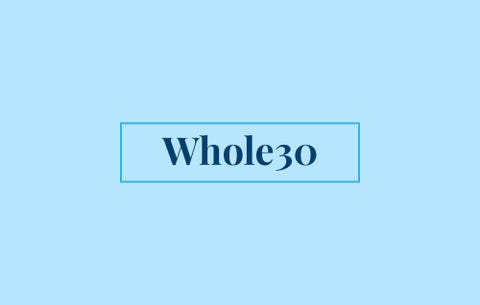High Protein Low Carb Diet Plan Indian
So, you're thinking of cutting bread and other carbs out of your diet. And while Oprah might call this blasphemy, some of the *~trendiest~* diets out there preach that this is one of the most effective ways to lose weight. There's Atkins, keto, paleo, Whole30, and South Beach, to name a few. But not all high-protein, low-carb meal plans are created equal.
Since extricating starchy goodness can be hard—Oprah has a point… we love bread, too!—you owe it to yourself to make sure the diet you're picking is effective and sustainable, keeping you healthy and full of the right nutrients without too much deprivation. That's why we asked Justine Roth, R.D., C.D.N., to rank the big five low-carb diets. Here's her list, from worst to best:

Christine Frapech
Called "keto" for short, this high-fat, moderate-protein, low-carb diet plan drastically lowers your carbohydrate intake to 50 grams or less so that your body will be forced to turn your fat into energy. Although Roth notes that there are several versions of the diet that allow for more flexibility (including carbs around workouts, and having off days from the diet), the standard keto diet requires participants to consume 75 percent fat, 20 percent protein, and 5 precent carbs. That means you'll bid adieu to most refined carbs, starchy veggies, fruits, legumes, root veggies… the works.
Pros: The diet has actually been shown to reduce epileptic seizures in children and is a recommended form of treatment by the Mayo Clinic.
Cons: But in terms of diet effectiveness, the bad might outweigh the good. According to Roth, keto is, "Extremely restrictive... Anyone trying to do athletic activity or exercise will not be able to perform at their peak levels if running their body on ketones for energy versus glucose, which is what it really wants to use." On top of the fact that the diet may cause fogginess and fatigue, keto also ranks poorly in terms of sustainability. You're supposed to eat your allocated food ratios until you reach your goal weight… but there isn't much of a plan for after you've accomplished your goal.
Related: 'I Did A Low-Carb Diet For 2 Weeks—Here's How Much Weight I Lost'

Christine Frapech
This Kim Kardashian favorite was created by the late Dr. Robert Atkins in 1972 as a way to help overweight individuals suffering from hypertension. Somewhat similar to keto, the diet is based on the idea of restricting total carbohydrate intake so that your body will burn fat for energy. But unlike keto, Atkins occurs in gentler phases that alter the amount of carbs you eat over a course of weeks, adding more carbohydrates like nuts, veggies, and fruits after that initial phase of ketosis.
Pros: "The diet promotes an overall reduction in calories, which is significant since there is only so much meat and eggs one can eat," says Roth. "This will yield quick weight loss, which in some people can be very motivating and help them stay focused on continuing to make diet changes to see more results."
Cons: But like the ketogenic diet, Atkins has similar cons related to the body's forced state of ketosis—which leads to irritability, fatigue, dizziness, and, oh yeah, bad breath. "Also, this isn't so feasible to continue in the real world as most people start craving a slice of bread or an apple pretty soon after starting the diet," Roth says.
Check out some of the weirdest weight-loss trends through history:

Christine Frapech
"The creators of the Whole30 diet claim this is not a diet but rather an overall lifestyle change that should improve medical conditions, eliminate cravings, re-balance your body, and overall create freedom from the stresses of eating," Roth says. "The plan is simple: Cut out all sugar, alcohol, grains, legumes, dairy, and anything with more then two or three ingredients." Whats left? Well, there's meat, eggs, fish, fruit, and vegetables. According to Roth, the general idea is that when you're deprived of sugar for 30 days, you stop thinking about and craving it.
Pros: According to Roth, the simple fact that there's no weighing or measuring of food provides some with a sense of relief. And the fact that quick weight loss is a result of the low calorie intake doesn't hurt either.
Cons: "The diet recommends cooking most if not all of your foods at home, so this can be very difficult, inconvenient, and unrealistic for many," says Roth. "There is no guidance on portion sizes so this can be very confusing and overwhelming. Also, not to mention, it doesn't help anyone to learn what to really do come day 31." Furthermore, even though the 30-day diet includes legumes and dairy, Roth says its sudden restrictive nature can make it difficult to stick with.
Related: 'I Ate Carbs For Breakfast Every Day For A Week—Here's What Happened'

Christine Frapech
Like Whole30, paleo is a serious lifestyle change, the premise of which is: If cavemen didn't eat it, then neither should you. "It also promotes the idea of an overall lifestyle change for people with illnesses, especially GI-related ones," says Roth. The diet isn't too different from the others we've listed: You can have grass-fed meat, vegetables, fruit, eggs, nuts/seeds, and healthy oils—and nothing that's been processed (and thus, inaccessible to your caveman forefathers.) "I call this the 'If you cant pick it or kill it, don't eat it' diet," Roth says.
Pros: The paleo lifestyle is overall positive. "It promotes eating whole, unprocessed foods and an overall healthier approach to the way you think about food," Roth says. "There is also a huge support network amongst the 'paleo community' with a huge presence on many social media outlets." That provides a strong sense of motivation and support.
Cons: Of course, unless you're extremely dedicated, this diet can be unrealistic and hard to maintain as it doesn't leave a lot of room for flexibility. According to Roth, "The benefits are also largely debated as there is no proof we should eat how our ancestors ate, especially since they lived one-third of the amount of time we do!"
(Learn how bone broth can help you lose weight with Women's Health's Bone Broth Diet.)

Christine Frapech
And now, Roth's favorite. The South Beach Diet incorporates set meal and snack times that include the elimination of refined carbohydrates and focus on including protein, healthy fats, vegetables, and eventually whole grains and fruits. The meal plan includes three separate phases, and comes complete with recipe books that can help followers stay motivated and have a varied diet.
Related: 'I Stopped Eating Carbs At Night For Two Weeks—Here's What Happened'
Pros: Like the others, the first positive result is the significant and speedy weight loss that occurs as a result of a strict first phase. Roth also likes that the diet "includes recommendations for fiber and has some benefits of controlling blood sugar if someone has diabetes. Overall, the diet promotes snacking and a varied meal plan once you are out of the first phase, which can be healthy for long-term weight loss and maintenance."
Cons: But that first strict phase can besohard to follow. We know the whole point of these diets is no carbs… but they're so good! "If you can last two weeks being hangry, then you are okay, but that can be hard and many people fall off before seeing major results," says Roth. If you stick to it, though, things get better.
This content is created and maintained by a third party, and imported onto this page to help users provide their email addresses. You may be able to find more information about this and similar content at piano.io
High Protein Low Carb Diet Plan Indian
Source: https://www.womenshealthmag.com/weight-loss/a19924727/low-carb-diet-plans-ranked/



